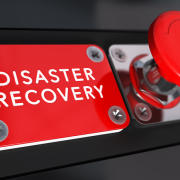4 business continuity planning essentials (Part 2 of 2)
1. Ensure your staff well-being
Communication during and following an emergency presents a variety of challenges. So, crafting an employee safety and communication plan that works is absolutely essential. The specifics will vary widely from company to company, but your emergency safety and communication plan must address the following:
- How the company will ensure employees are safe during a disaster event
- How it will communicate essential information to employees following the event
The first part will depend heavily on the nature and location of your business.
Safety planning for a large manufacturing facility will obviously be very different than for a small real estate office, for example. Because of this, it’s very difficult to provide specific best practices for this part of your BC/DR plan. However, the key is to match your safety plan to the specific needs of your organization.
For the second part, you will need to first gather a variety of information and make sure that it is well documented, easily accessible and stored in a number of secure locations. This should include up-to-date employee contact information (email, mobile and home phone numbers, emergency contact information, etc.). It should also include a methodology for contacting employees.
Effective communication
Obviously, email is the easiest way to reach a large group of employees, but if your company’s email server is down, you are out of luck.
Some businesses employ redundant Exchange servers or cloud-based services to ensure email access. Of course, if you are without Internet access entirely, you’ll need an alternative.
A call tree, sometimes referred to a phone tree, call list, phone chain or text chain, is another popular method for distributing important information to employees during and following an event.
Here’s how it works.
A predetermined employee initiates the call chain with a call to the next person on the chain. That employee contacts the next person on the list and the chain continues until everyone on the call tree has been reached. Other companies may automate emergency calls with purpose-built communications software/services.
Related: Backup or business continuity? What businesses need in 2019
Regardless of the methods you use to distribute information to your employees, your emergency communications plan should provide enough detail that it can be carried out if the plan’s creator is not available following the event (e.g. due to injury or impassable roads). Your plan should also be flexible enough to accommodate for a variety of potential emergency situations.
The response to a fire in your facility during working hours will be very different from communications following the widespread distribution of a defective product, for example. Emergency communications should be brief and as accurate as possible. Depending on the structure of your organization, you may want to keep managers updated, allowing them to pass on information to direct reports on a “need-to-know” basis.
Again, the specifics of your business will dictate the correct approach.
Finally, it is essential to test and update the communications plan periodically. Testing will identify gaps in the plan such as out-of-date employee lists or contact information.
More on this subject: Disaster recovery planning step (a series) – the communication plan
2. Keep customers in the loop
Managing customer relationships is obviously critical to the ongoing success of your business. As such, it is important to craft a plan for distributing information to your customers during and following a disaster event. The scope of your customer communications plan will vary widely depending on the nature of your business.
Obviously, not every glitch in operations will merit reaching out to your customers.
However, if an event occurs that is likely to impact them, it is essential to communicate the details of the issue and explain the steps you are taking to mitigate it. This might mean direct communication to your customers, but it could also mean messaging via traditional and social media.
Failure to do so can have a negative impact on the reputation of your organization. Take the way Toyota responded to reports of self-accelerating vehicles back in 2009-2010 as an example. Instead of acknowledging the issue and assuring customers that the company was investigating the problem, the company opted to cite user error in a classic example of blaming the victim.
The problem was eventually pinned on floor mats, gas pedal design and faulty electronics; and although Toyota spent billions to replace accelerator components, their initial response created distrust among customers. You will also need to handle a wide array of incoming communications following a disruption.
Depending on the nature of your business this could mean: support requests, high volumes of email and phone traffic, social media activity from frustrated customers, media interest—the list goes on and on.
Your organization’s ability to respond to customer needs following an event will have a direct impact on reputation.
Protect your rep
So, how do you keep your good reputation intact? It comes down to careful preparation.
First, you must be prepared from a personnel standpoint. Carefully planning communications with customers is essential. You will need to be able to respond quickly and clearly explain the steps you are taking to resolve issues. All customer-facing staffers should be briefed and ready to deliver a clear and consistent message. You may want to consider using script templates, which can be adapted to address various events.
Pre-scripted messages can be developed, approved by management and quickly distributed to customers following a disruption. You also need to ensure access to a communication infrastructure (phone, email, Internet access). This might mean redundant phone lines/services, hosted PBX systems, cloud-based email or redundant Exchange servers, etc.
Keep reading: Disaster recovery planning (a series) – client contacts
Larger businesses may need to invest in a secondary contact center to manage inbound and outbound communications. There are a number of vendors that offer call center services, temporary workspaces, and even mobile data centers.
Testing or rehearsing all or parts of your customer communications plan should be considered essential as well. Testing is the best way to identify and resolve customer support weaknesses and communication infrastructure issues.











